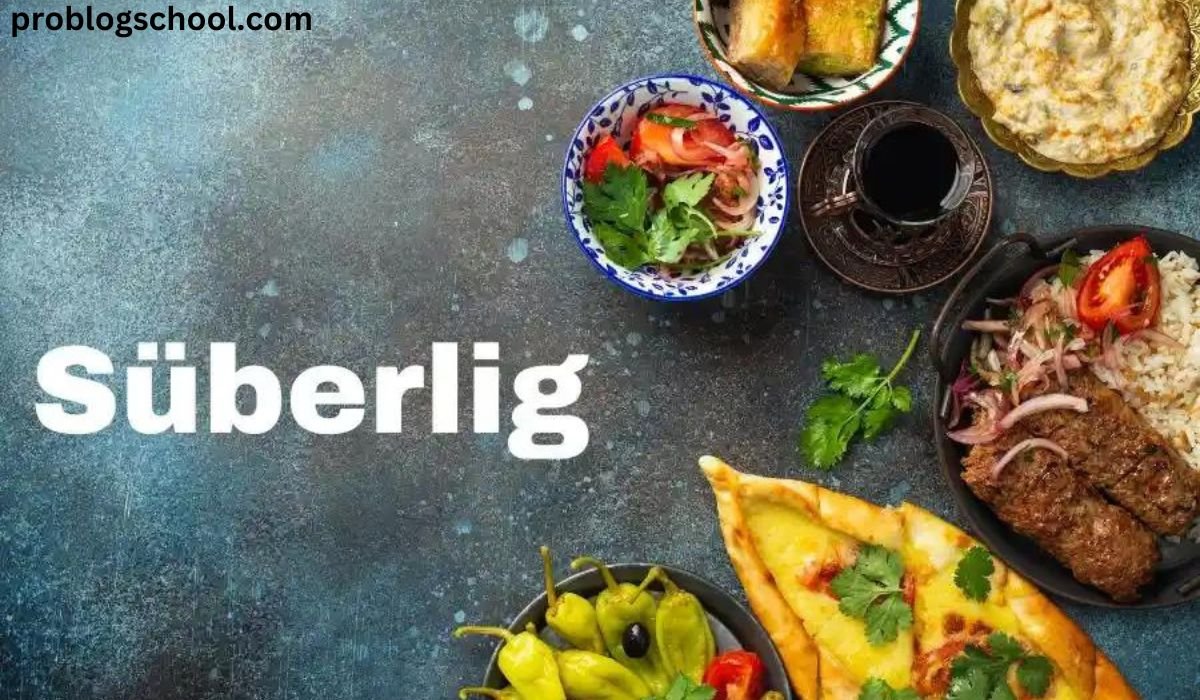Introduction
Çebiti is a culinary delight deeply rooted in Turkish culture, embodying a rich history and an array of flavors that have been cherished for generations. This traditional dish is not only a staple of Turkish cuisine but also a symbol of cultural heritage, bringing families and communities together through its preparation and consumption. In this article, we will explore the origins, ingredients, varieties, and health benefits of Çebiti, offering a comprehensive guide to this beloved Turkish delicacy.
A Journey Through History
Origin of Çebiti in Turkish Culture and History
The origins of Çebiti can be traced back to ancient times, where it was first introduced as a humble dish by nomadic tribes in the Anatolian region. Over the centuries, Cebiti evolved, gaining prominence as a popular food item in Turkish households. This dish, known for its simplicity and flavor, became a culinary staple during the Ottoman Empire, where it was often served at royal banquets and traditional gatherings.
Historical Significance and Cultural Context
Çebiti holds a special place in Turkish culture, representing more than just a meal; it is a connection to the past. The dish has been passed down through generations, with each family adding their unique twist to the recipe. In Turkish society, Cebiti is not only a source of nourishment but also a symbol of hospitality and togetherness. It is commonly served during special occasions, such as weddings, religious celebrations, and community festivals.
Evolution of Çebiti Over Time
While the traditional recipe for Çebiti has remained largely unchanged, regional variations and modern interpretations have emerged. These adaptations reflect the diverse culinary landscape of Turkey, where different regions have infused their local ingredients and flavors into the dish. Today, Cebiti is enjoyed in various forms, from the classic preparation to more contemporary versions that cater to evolving tastes.
Ingredients and Preparation
Essential Ingredients Used in Çebiti
The foundation of any Çebiti recipe lies in its ingredients, which are simple yet flavorful. The primary ingredients typically include finely ground wheat or bulgur, water, salt, and a blend of spices. Depending on the region, other elements such as minced meat, vegetables, and herbs may be added to enhance the flavor profile. The choice of spices, often a combination of cumin, paprika, and black pepper, plays a crucial role in defining the dish’s unique taste.
Traditional Preparation Methods and Techniques
The art of preparing Çebiti is a meticulous process that requires skill and patience. Traditionally, the ingredients are mixed by hand, with the dough kneaded until it reaches the perfect consistency. This process is often a communal activity, with family members coming together to prepare the dish. Once the dough is ready, it is shaped into small patties or flattened discs, which are then cooked over a low flame. The cooking process is slow and deliberate, allowing the flavors to meld together and create a harmonious taste.
The Art of Crafting Çebiti
Crafting Çebiti is more than just following a recipe; it is an art form that has been perfected over generations. Each step, from selecting the finest ingredients to the careful kneading of the dough, contributes to the final product. The attention to detail and respect for tradition are what make Çebiti a dish that continues to be cherished by those who appreciate the culinary heritage of Turkey.
Flavors and Varieties
Classic Çebiti Flavor Profile
The classic flavor profile of Çebiti is defined by its simplicity and the quality of its ingredients. The dish offers a balanced combination of savory and slightly spicy notes, with the earthy flavor of wheat complemented by the warmth of spices. The texture is soft and chewy, making it a comforting and satisfying meal.
Popular Variations and Regional Differences
While the traditional version of Çebiti remains popular, regional variations have introduced new flavors and ingredients. In some parts of Turkey, Çebiti is made with the addition of lentils, creating a heartier dish. In other regions, it is served with a side of yogurt or fresh herbs, adding a refreshing contrast to the rich flavors. These variations highlight the adaptability of Çebiti and its ability to evolve while maintaining its core identity.
Unique Flavor Combinations and Experiments
Modern interpretations of Çebiti have led to unique flavor combinations that cater to contemporary tastes. Chefs and home cooks alike have experimented with adding ingredients such as sun-dried tomatoes, nuts, and exotic spices to create a fusion of flavors. These innovations demonstrate the versatility of Çebiti, making it a dish that can be enjoyed in both traditional and modern settings.
Çebiti Traditions and Etiquette
Cultural Significance of Çebiti in Turkish Society
In Turkish culture, Çebiti is more than just a meal; it is a symbol of hospitality and community. Serving Çebiti to guests is a gesture of warmth and generosity, reflecting the deep-rooted values of Turkish society. The dish is often associated with family gatherings and communal meals, where it is shared among loved ones in a spirit of togetherness.
Etiquette and Customs Surrounding Its Consumption
When it comes to enjoying Çebiti, there are certain customs and etiquettes that are observed. In traditional settings, Cebiti is often served on a large platter, with everyone seated around the table. It is customary to eat with the right hand, using bread to scoop up the food. Sharing the dish is an essential part of the experience, emphasizing the importance of community and connection.
Çebiti in Traditional Ceremonies and Celebrations
Çebiti plays a significant role in various Turkish ceremonies and celebrations. During weddings, it is customary to serve Çebiti as part of the feast, symbolizing prosperity and good fortune for the newlyweds. Similarly, the dish is often prepared during religious holidays, such as Eid, where it is shared with neighbors and friends as a gesture of goodwill.
Enjoying Çebiti: Tips and Recipes
Best Ways to Enjoy Çebiti
Çebiti can be enjoyed in various ways, depending on personal preference. Traditionally, it is served as a main course, accompanied by a side of fresh vegetables or a tangy yogurt dip. For a more casual experience, Çebiti can be paired with tea or coffee, making it an ideal snack for any time of day. Its versatility allows it to be enjoyed as a standalone dish or as part of a larger meal.
Simple Çebiti Recipes for Home Cooks
For those who wish to recreate Çebiti at home, there are simple recipes that capture the essence of the dish. A basic recipe involves mixing bulgur with water and spices, shaping the mixture into patties, and cooking them until golden brown. For added flavor, minced meat or vegetables can be incorporated into the dough. This easy-to-follow recipe allows home cooks to experience the rich flavors of Çebiti in their own kitchen.
Pairing Çebiti with Other Foods and Beverages
Pairing Çebiti with the right foods and beverages can elevate the dining experience. A refreshing salad made with cucumbers, tomatoes, and mint is a perfect complement to the rich flavors of Çebiti. Additionally, serving the dish with a glass of ayran, a traditional Turkish yogurt drink, enhances the overall meal, balancing the spices with a cool, creamy texture.
Çebiti’s Health Benefits
Nutritional Value of Çebiti
Beyond its delicious taste, Çebiti offers several nutritional benefits. The dish is high in fiber, thanks to the bulgur or wheat base, making it a satisfying and healthy option. It is also a good source of protein, especially when made with meat or lentils. The spices used in Çebiti, such as cumin and paprika, provide antioxidants that contribute to overall health.
Potential Health Benefits
In addition to its nutritional value, Çebiti may offer specific health benefits. The high fiber content supports digestive health, while the protein provides sustained energy. The antioxidants found in the spices help combat inflammation and support the immune system. As a dish made from whole grains and natural ingredients, Çebiti can be enjoyed as a guilt-free indulgence that nourishes both the body and soul.
Çebiti as a Guilt-Free Indulgence
For those who are health-conscious, Çebiti offers a balanced meal that can be enjoyed without guilt. Its wholesome ingredients and satisfying flavors make it a perfect choice for those looking to indulge in traditional Turkish cuisine while maintaining a healthy lifestyle.
You May Also Like: intrepidfood.eu: Your Ultimate Guide to European Food Safety
Conclusion
In conclusion, Çebiti is a dish that embodies the rich culinary heritage of Turkey. From its historical origins to its modern interpretations, Çebiti continues to be a beloved part of Turkish culture. Whether enjoyed in its classic form or as a contemporary creation, Çebiti offers a delicious and nutritious experience that brings people together. As you explore the world of Çebiti, may you find joy in its flavors and traditions, savoring each bite as a connection to the past and a celebration of the present.
FAQs
What is Çebiti, and where does it originate?
Çebiti is a traditional Turkish dish made from bulgur or wheat, originating from ancient Anatolian tribes and evolving through Turkish history.
How is Çebiti traditionally prepared?
Traditional Çebiti is made by mixing bulgur, water, spices, and sometimes meat, then shaping it into patties and cooking slowly over a low flame.
What are some variations of Çebiti?
Çebiti varies by region, with additions like lentils, herbs, and yogurt. Modern twists include sun-dried tomatoes and nuts.
Is Çebiti healthy?
Yes, Çebiti is high in fiber, protein, and antioxidants, making it a nutritious and balanced meal option.
How do you serve and enjoy Çebiti?
Çebiti is best enjoyed with sides like yogurt or salad and pairs well with tea or ayran, a traditional Turkish yogurt drink.











